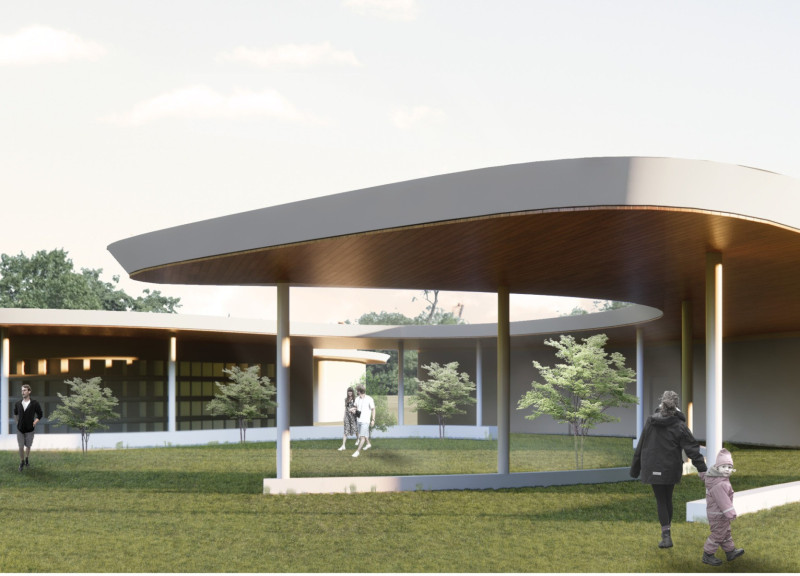5 key facts about this project
Situated within the tranquil expanse of Forest Cemetery Park, the design responds to Latvian traditions surrounding death and remembrance. It views death not as a finality but as a part of life's ongoing journey. The environment created here facilitates both mourning and celebration through community activities, such as Sveču vakars, known as Candlelight Evening. This engagement with cultural practices is essential to the overall concept.
Covered Path
A significant feature of the design is the covered path that winds through the cemetery, allowing visitors to navigate the area while promoting a sense of togetherness during ceremonies. The path is protected from the elements, which is especially relevant given the frequent rain typical of the region. Visitors can engage with the site comfortably at any time of the year, encouraging a continuous relationship with the landscape.
Solace Area
Alongside the covered path is the Solace area, crafted as a private space for moments of reflection. This zone offers shelter to those seeking solitude while mourning. It allows visitors a chance to step away from communal activities for introspection. This area acknowledges the individual experience of grief, recognizing the need for personal space within a collective setting.
Community Space
The Community space encourages social interactions, where visitors can come together. This area is designed to accommodate gatherings and feature vendors offering flowers, candles, and food. It aims to deepen the sense of community, allowing people to share memories and support each other during difficult times. Through thoughtful organization, the space fosters a communal spirit within the act of remembrance.
Auditorium
In addition to these spaces, the design includes an Auditorium intended for cultural rituals, such as hymns, dances, and chants. This area serves as a gathering point for cultural expressions significant to the community. Its inclusion supports the idea of participation and connection, allowing individuals to engage in important traditions that honor the deceased.
The project incorporates a roof design that collects rainwater, repurposing it as greywater for various uses. This approach not only addresses practical needs but also emphasizes environmental responsibility. Such elements are carefully integrated into the overall design, enhancing both functionality and sustainability.






















































